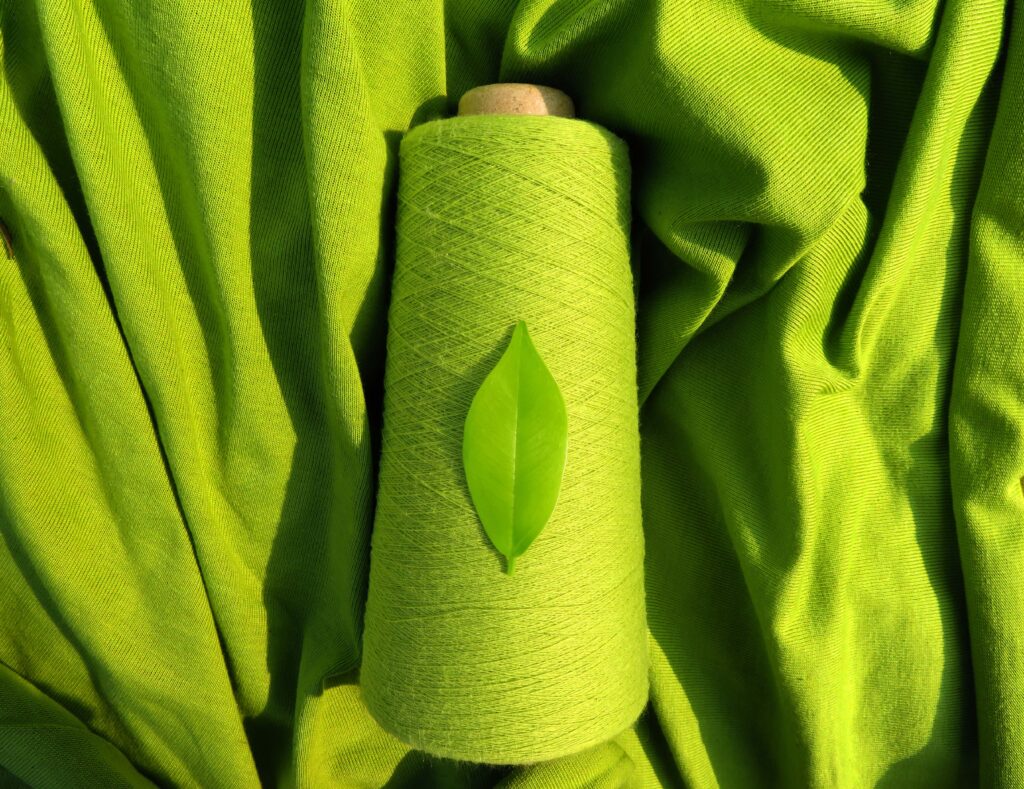Fashion is often the medium we unconsciously express ourselves with. It reflects our ever-changing moods, from the colors, textures, prints, and cuts living in your closet. And whether that’s neatly folded or a gigantic pile, every piece of fabric – textile – tells a story.
It’s impossible to pinpoint the exact number of fabrics or garments we consume from birth until death. But take a moment to look around you. How many textiles do you see? Materials are everywhere, from clothing, and household items, to public transportation. And when you multiply your average number by 8,045,311,447 (world population 2023), you can partially grasp the current textile consumption rate. Yet this number is increasing EVERY. SINGLE. YEAR.
Estimations indicate that humans started wearing fabric around 100,000 to 500,000 years ago! Let’s throw it right back to the Stone Age era when raw animal skin met plants, a few sparks of flint, and BOOM – fabric was born. Undoubtedly, material choices probably veered towards more practicality and survival than in Vogue. But for sure, what people wore reflected their social status, as it does today.
The Industrial Revolution transformed the fashion industry. A sweater can enter your closet quicker than it took our Stone Age ancestors to light a fire using two pieces of flint! Hello, #FastFashion. Just like climate change, gone are the days of the seasons. Well, exclusively shopping according to the season, that is. An individual’s lifestyle is now center stage, whereby every product is produced according to their specific profile and price point. Fast fashion creates more new products than consumers can possibly see. Talk about creating demand, eh!
Fast finger-flicking #Instagram and #TikTok social media content also spins the wheel of consumption. Influencers are our current-day elite, ruling the kingdoms of fast fashion and the opulent world of Haute Couture (High Fashion). They push personal brands and endorse exclusive, must-have collaborations with household names. It’s all about selling an aspirational lifestyle. And, hopefully, just in time before someone becomes irrelevant or, worse, canceled. Ultimately, the world of textiles is unraveling rapidly, especially as we enter the obscure AI era.
On a positive note, sustainability is at the tip of many tongues. Gen-Z is one of the most environmentally conscious consumer groups, and this reflects the brands they choose to support. Small changes significantly impact our planet from excessive waste.
So, how can consumers make these same changes regarding textiles? Education and awareness. Next time you find yourself perusing the latest trends, physically or, more commonly, digitally, look at the label on that sweater because it tells a story:
- What material is it made of?
- Is it natural and decomposable?
- Is it synthetic and non-decomposable?
- Which country was it produced
Some companies recognize the challenges related to sustainability and are putting forward practical solutions like recycled polyester, recycled nylon, etc. However, these are synthetic fibers. They are recyclable but not #biodegradable. Now, let’s look at textiles from a product development perspective. There are so many steps involved in bringing a design to life — various blends of material, weights, color palettes, collaborations, bridging print trends, print manufacturers, dye capabilities, pattern design, cut-sew manufacturing, etc., So, how can we introduce sustainable practices at each step?
Often, the easiest option is the quickest and cheapest. But small changes create new habits. And when this starts with companies choosing high-quality natural fiber (where possible) instead of synthetic, the concept of sustainability percolates down to consumers knowing more about their garments and enjoying natural products. Other key areas to implement more sustainable practices include ink utilization, water consumption, and post-processing engineering. And just like we inspire to educate and bring awareness to our consumers, big fashion brands can discover sustainable solutions by attending conferences and sharing their hurdles. They can also collaborate with Textile experts and educate their teams on making better development and buying decisions. It all starts with curiosity of how and the will to innovate leads to desirable solutions. As a creative leader, you decide what comes out next year/season and your audience admires what they see. A small step towards sustainable innovation could make the consumer’s experience better and more ethical.
When smart cars first came to market, the initial investment brought consumer reluctance. However, perceptions soon changed due to government subsidization and regulations, for example, carbon emissions taxes, which incentivized consumers’ choices. With more investment and education in-line with the green initiatives, these cars became affordable and a bigger impact on the environment is possible. Many people couldn’t imagine life without an electric car today! This is just the start, in 20 years from now the carbon emissions will be much lower than what it is today. Let’s come together and see how we can bring the same approach to the textile industry.
As a CEO of an innovative textile company in North America, we are constantly educating our clients on innovating responsibly and working with designers on how they can engineer their thoughts with natural fibers. These initiatives not only raise awareness in the creative department but the development processes bring out the best ethical products for the end users, our Space Dye Innovation is one of the biggest examples of innovating with natural fiber. Further, it will be their responsibility to educate their customers, hoping one way this educational-chain will create the sustainable impact we need on the environment. Speaking of, our developments of 2024-25 are purely focusing on natural sustainable textiles. We feel this is the way to invest.
INNOVATIVE. SUSTAINABLE. TEXTILES.

Aamir Thobhani
CEO / Creative Consultant
InnoTex Solutions & Collaborations Inc.

